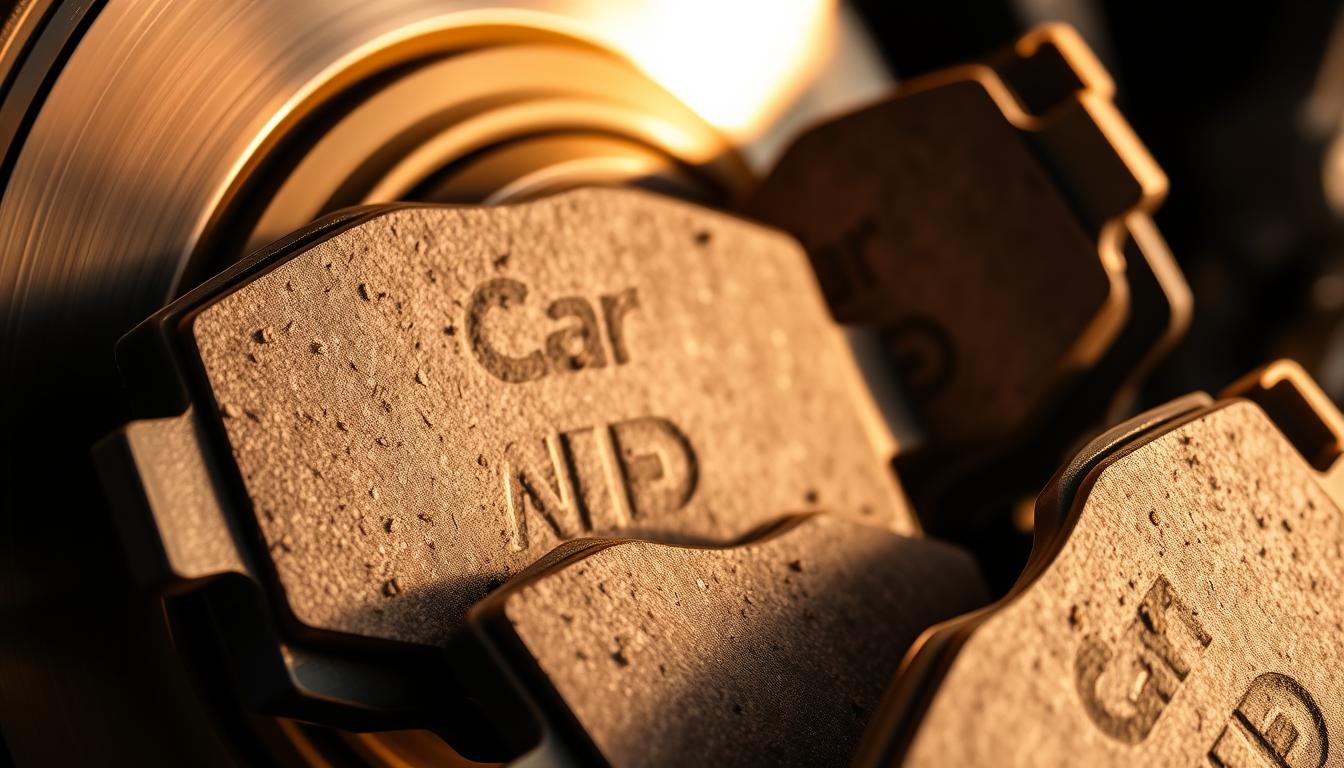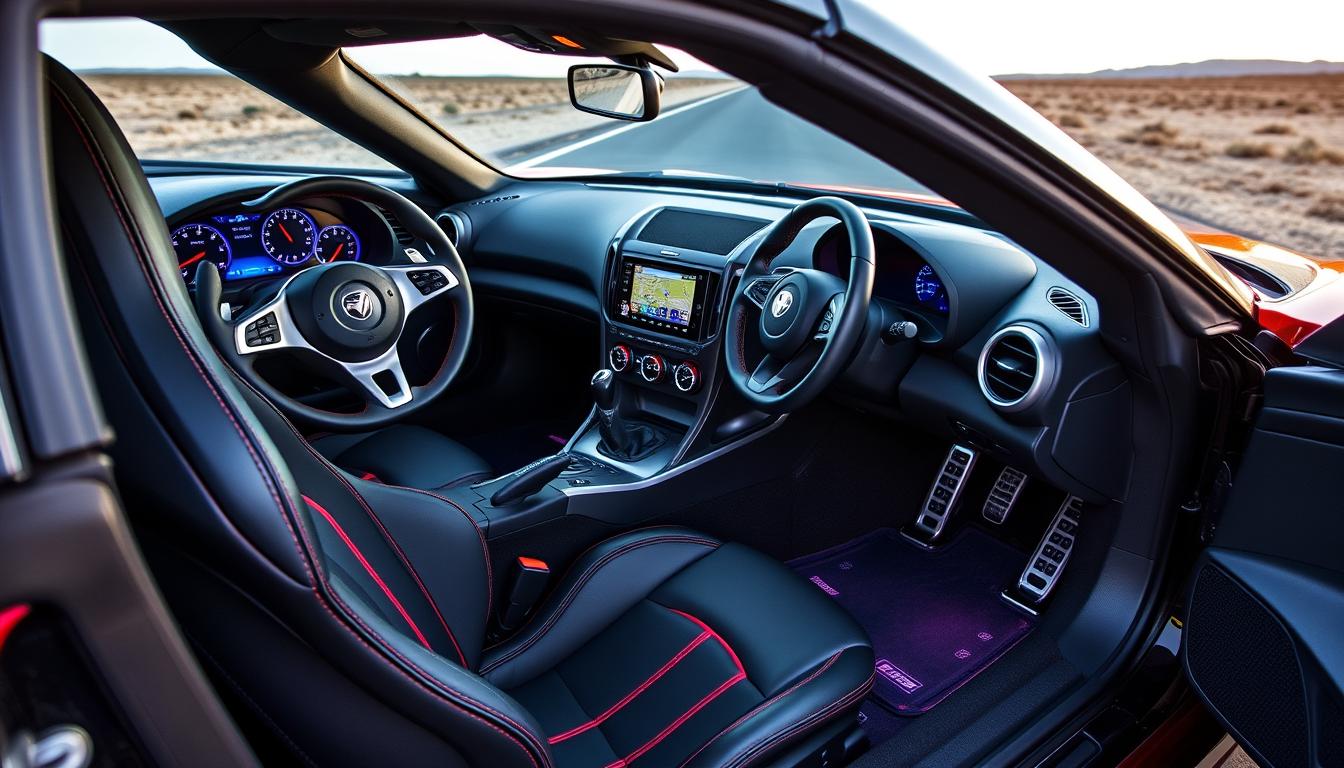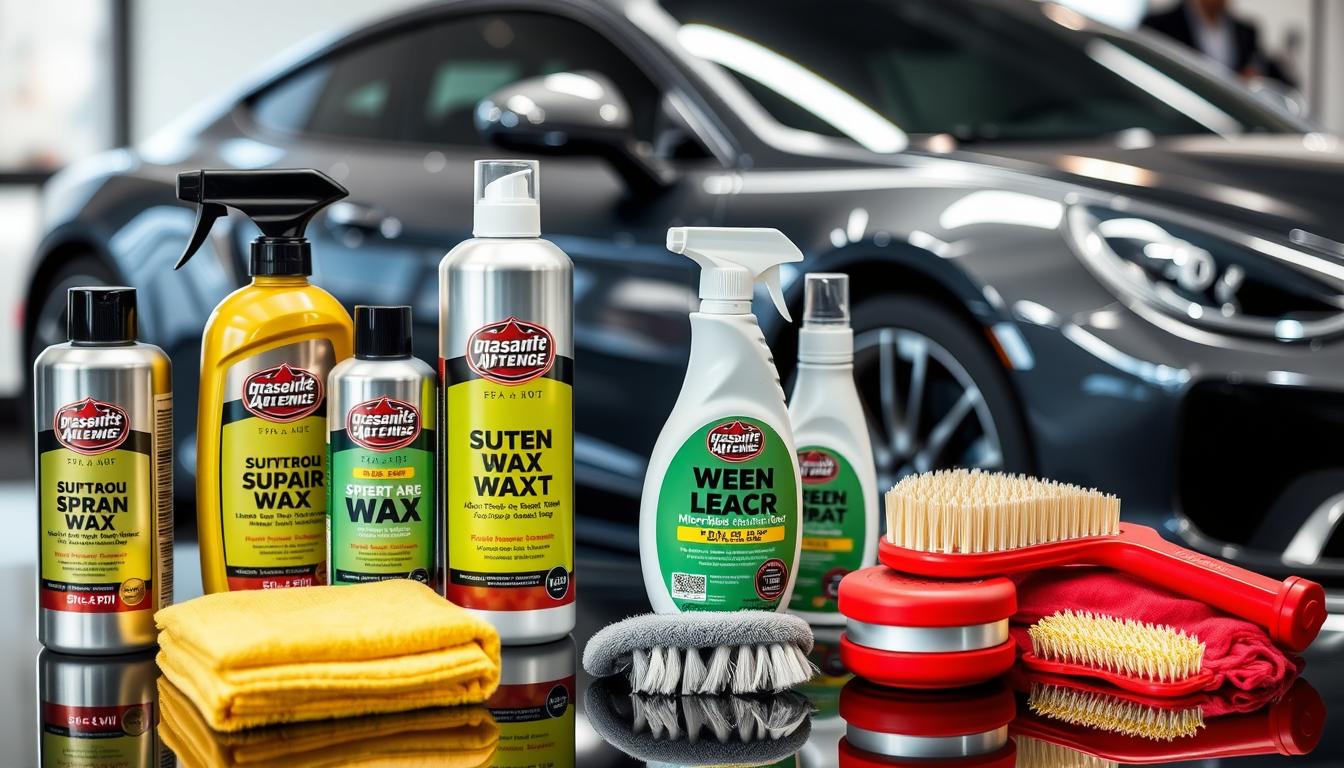Did you know that faulty brake pads are a leading cause of road accidents? Brake pads play a crucial role in ensuring the safety of drivers, passengers, and other road users. They create the necessary friction to slow down and stop a vehicle when the brake pedal is pressed.
Over time, brake pads undergo wear and tear due to constant use, making it essential for vehicle owners to know when to replace them to maintain optimal braking system performance. Neglecting timely brake pad replacement can have severe consequences, including reduced stopping power and increased stopping distances.
Key Takeaways
- Timely brake pad replacement is crucial for vehicle safety.
- Worn-out brake pads can lead to increased stopping distances.
- Brake pads play a vital role in the braking system.
- Neglecting brake pad replacement can result in complete brake failure.
- Regular maintenance is essential for optimal braking performance.
Understanding the Importance of Brake Pad Replacement
Understanding the importance of brake pad replacement is vital for every vehicle owner who prioritizes safety and performance. Brake pads play a crucial role in the functioning of a vehicle’s braking system, and their replacement is essential to maintain the safety and efficiency of the vehicle.
How Brake Pads Wear Down Over Time
Every time you engage your vehicle’s brakes, a small amount of friction material is worn off the brake pads and/or shoes. Over time, this material becomes thinner, and if not replaced, it can lead to serious consequences, including damage to the discs or drums and increased stopping distances. The wear and tear on brake pads can be influenced by various factors such as driving style, environmental conditions, vehicle weight, and typical driving conditions.
The composition of brake pads is designed to provide consistent stopping power throughout their lifespan. However, the gradual wear down of the friction material is inevitable. Regular inspections can help identify worn-out brake pads before they cause any damage.
The Role of Brake Pads in Vehicle Safety
Brake pads are critical for vehicle safety as they directly impact stopping distance, braking predictability, and overall control of the vehicle. Properly functioning brake pads help prevent accidents by ensuring the vehicle can stop quickly and predictably in emergency situations. On the other hand, worn-out brake pads can compromise safety by increasing stopping distances and potentially causing brake fade during repeated or heavy braking.
Regular brake pad inspections are essential to ensure optimal safety performance. By maintaining your brake pads in good condition, you can significantly reduce the risk of accidents and ensure a safe driving experience.
5 Warning Signs Your Brake Pads Need Replacement
Recognizing the warning signs that indicate your brake pads need replacement is crucial for maintaining vehicle safety and preventing costly repairs. Your vehicle’s braking system is a complex mechanism, and the condition of your brake pads plays a significant role in its effectiveness.
Unusual Noises: Squealing, Screeching, and Grinding
One of the most common indicators that your brake pads are worn out is the presence of unusual noises when you apply the brakes. If you hear a high-pitched squealing or screeching sound, it may be due to the wear indicators on your brake pads contacting the rotors. A grinding noise, on the other hand, suggests that the brake pads are severely worn and the metal backing is making contact with the rotor, potentially causing damage.
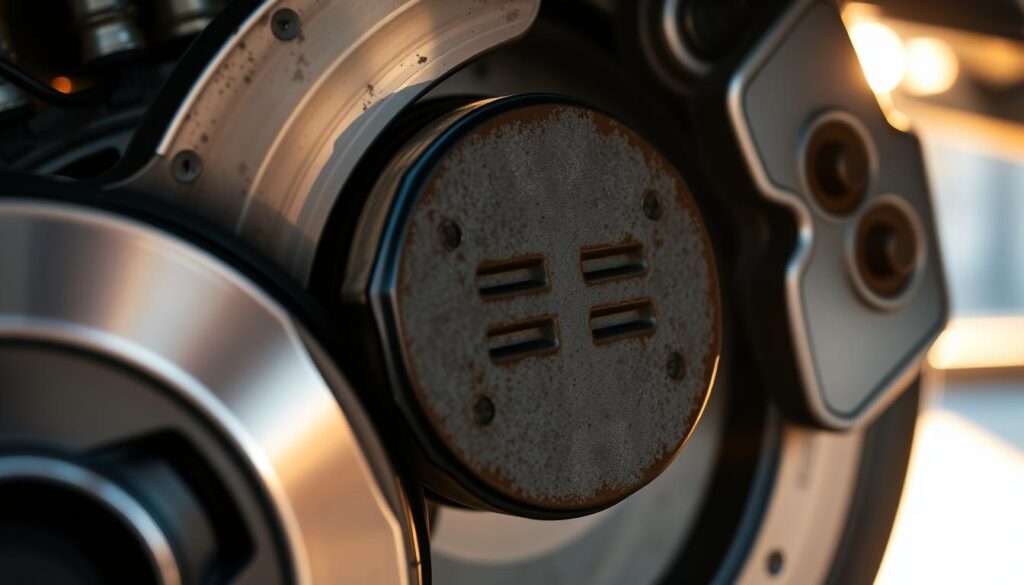
Visible Wear and Thinning of Brake Pads
For vehicles equipped with disc brakes, it’s possible to visually inspect the brake pads through the wheel spokes. If the friction material on the pad is less than ¼ inch thick, it’s a clear sign that they need to be replaced. Regular inspections can help identify worn brake pads before they cause more serious issues.
Reduced Braking Performance and Responsiveness
Worn brake pads can significantly affect your vehicle’s braking performance. If you notice that it takes longer to stop or that the brake pedal feels spongy, it could be a sign that your pads are worn out. This reduced responsiveness can compromise your safety on the road, making it essential to have your brake pads inspected.
Vibration or Pulsation in the Brake Pedal
A vibrating or pulsating brake pedal can indicate uneven wear of the brake pads or warped rotors. This uneven wear can lead to reduced braking efficiency and increased stopping distances. If you experience this, it’s crucial to have your braking system checked by a professional.
Dashboard Warning Lights
Some modern vehicles are equipped with a brake pad wear indicator light on the dashboard. If this light illuminates, it signals that your brake pads need to be replaced. Even if your vehicle doesn’t have this specific indicator, a general brake system warning light can also suggest issues with your brake pads. For more information on maintaining your vehicle, including choosing the right tires, visit our expert advice page.
The Consequences of Delaying Brake Pad Replacement
Putting off brake pad replacement is a risky move that can have far-reaching consequences for your vehicle. When brake pads are allowed to wear down completely, it can lead to total brake failure, posing a serious accident risk for you, your passengers, and other road users.
Damage to Rotors and Other Brake Components
Worn-out brake pads can cause severe damage to the rotor due to metal-on-metal contact when the friction material is completely worn out. This can necessitate costly rotor resurfacing or replacement in addition to new brake pads. The excessive heat generated can also damage calipers, brake lines, and other hydraulic components of the braking system.
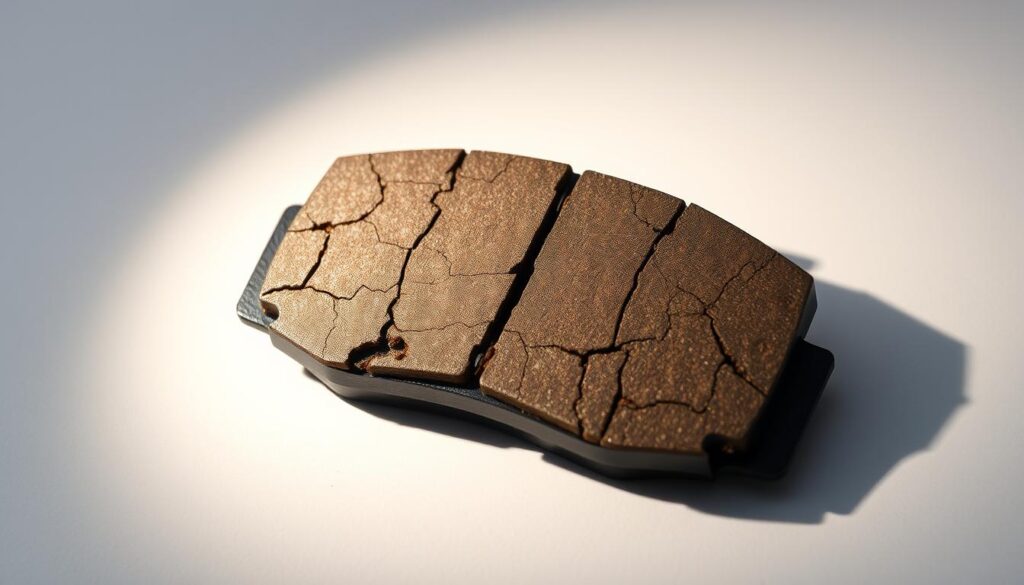
Compromised Vehicle Safety and Increased Stopping Distances
Neglecting to replace worn brake pads can lead to glazing, a process where the friction material becomes excessively hard and crystallized due to extreme heat buildup. This severely compromises your vehicle’s overall stopping power, increasing stopping distances and the risk of being involved in an accident. For more on maintaining your vehicle’s safety, check out our guide on top reliable car maintenance tips.
Higher Repair Costs in the Long Run
Delaying brake pad replacement can result in significantly higher repair costs. Replacing brake pads timely is a minor investment compared to the cost of repairing or replacing damaged rotors, calipers, and other components. The table below illustrates the potential cost savings of timely brake pad replacement.
| Component | Timely Replacement Cost | Delayed Replacement Cost |
|---|---|---|
| Brake Pads | $100-$300 | $500-$1000 (including rotors) |
| Rotors | $0 (if replaced with brake pads) | $200-$500 |
| Total | $100-$300 | $700-$1500 |
Choosing the Right Brake Pads for Your Vehicle
To ensure your vehicle brakes effectively, it’s essential to choose the right brake pads tailored to your specific needs. The type of brake pad material used can significantly impact your vehicle’s braking performance and overall safety.
Organic vs. Semi-Metallic vs. Ceramic Brake Pads
There are three primary categories of brake pad materials: organic, semi-metallic, and ceramic. Organic brake pads are made from carbon, rubber, and fiberglass, offering a quieter ride and less dust but wearing faster. Semi-metallic brake pads consist of a mix of metal fibers and organic materials, providing better heat dissipation and durability. Ceramic brake pads, constructed from ceramic fibers and copper, offer superior stopping power and are ideal for high-performance vehicles.
| Brake Pad Type | Composition | Performance | Durability |
|---|---|---|---|
| Organic | Carbon, rubber, fiberglass | Quieter, less dust | Wears faster |
| Semi-Metallic | Metal fibers, organic materials | Better heat dissipation | More durable |
| Ceramic | Ceramic fibers, copper | Superior stopping power | Long-lasting |
Factors to Consider: Driving Style, Climate, and Vehicle Type
When selecting brake pads, it’s crucial to consider your driving style, the climate you operate in, and your vehicle’s specifications. Aggressive drivers or those in stop-and-go traffic may benefit from more durable options like semi-metallic or ceramic pads. For more information on choosing the right brake pads, visit our guide on how to choose the right brake pads for your.
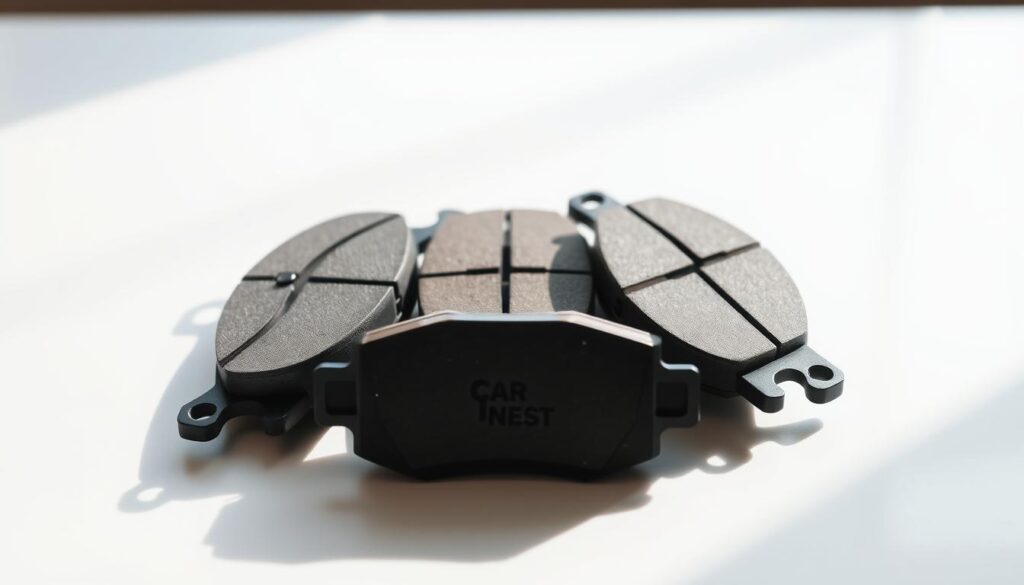
By considering these factors and understanding the different types of brake pad materials available, you can make an informed decision that enhances your vehicle’s braking performance and safety.
Conclusion: Prioritizing Brake Pad Maintenance for Your Safety
To wrap up, maintaining your brake pads is not just about vehicle care; it’s about safeguarding yourself and others on the road. Throughout this guide, we’ve emphasized the critical importance of timely brake pad replacement for ensuring your vehicle’s braking system functions properly.
Regular maintenance by a qualified mechanic is crucial for keeping your brake pads in good shape. Inspections can catch problems early, preventing more damage and ensuring your safety on the road. By prioritizing pad replacement and regular service, you can extend the life of other braking system components, saving you money in the long run.
We recommend establishing a regular brake inspection schedule based on your vehicle’s usage patterns, typically every 10,000-15,000 miles or at least once a year. It’s also essential to work with qualified mechanics who specialize in brake systems to ensure proper installation and adjustment of replacement brake pads.
Don’t ignore the warning signs that indicate brake pad replacement is needed. Consult your vehicle’s owner manual for specific recommendations regarding brake pad replacement intervals and compatible brake pad types. For professional assistance with brake pad replacement or questions about your vehicle’s braking system, feel free to reach out to us on WhatsApp: +44-7822010953.
By prioritizing brake pad maintenance, you’re not only ensuring your safety but also promoting responsible driving practices that make our roads safer for everyone.
